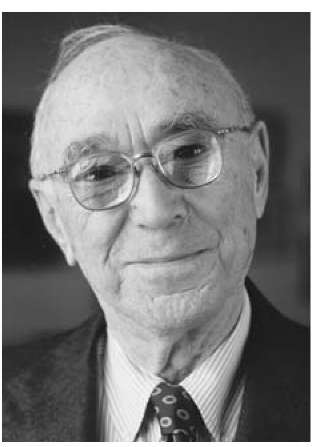Jerome Bruner (Jerome Seymour Bruner)

Jerome Bruner was born on October 1, 1915 in New York City, to Herman and Rose Bruner, who emigrated from Poland. He received a bachelor’s degree in psychology, in 1937 from Duke University, and went on to earn a master’s degree in psychology in 1939 and then a doctorate in psychology in 1941 from Harvard University. In 1939 Bruner published his first psychological article on the effect of thymus extract on the sexual behavior of the female rat. During World War II, Bruner served on the Psychological Warfare Division of the Supreme Headquarters of the Allied Expeditionary Force Europe committee under Eisenhower, researching social psychological phenomena. In 1945 Bruner returned to Harvard as a psychology professor and was heavily involved in research relating to cognitive psychology and educational psychology. In 1970 Bruner left Harvard to teach at the University of Oxford in England. He returned to the United States in 1980 to continue his research in developmental psychology. In 1991 Bruner joined the faculty at New York University, where he still teaches students as of 2015. As an adjunct professor at NYU School of Law, he studies how psychology affects legal practice. Throughout his career, Bruner has been awarded honorary doctorates from Yale, Columbia, Sorbonne, ISPA Instituto Universitário, as well as colleges and universities in such locations as Berlin and Rome, and is a Fellow of the American Academy of Arts and Sciences.
Jerome Bruner is one of the pioneers of the cognitive psychology movement in the United States, which began through his own early research on sensation and perception as being active, rather than passive processes. In 1947 Bruner published his study Value and Need as Organizing Factors in Perception in which poor and rich children were asked to estimate the size of coins or wooden disks the size of American pennies, nickels, dimes, quarters and half-dollars. The results showed that the value and need the poor and rich children associated with coins caused them to significantly overestimate the size of the coins, especially when compared to their more accurate estimations of the same size disks. Similarly, another study conducted by Bruner and Leo Postman showed slower reaction times and less accurate answers when a deck of playing cards reversed the color of the suit symbol for some cards (e.g. red spades and black hearts). These series of experiments issued in what some called the ‘New Look’ psychology, which challenged psychologists to study not just an organism’s response to a stimulus, but also its internal interpretation. After these experiments on perception, Bruner turned his attention to the actual cognitions that he had indirectly studied in his perception studies. In 1956 Bruner published the book A Study of Thinking, which formally initiated the study of cognitive psychology. Soon afterwards Bruner helped found the Center of Cognitive Studies at Harvard. After a time, Bruner began to research other topics in psychology, but in 1990 he returned to the subject and gave a series of lectures, later compiled into the book Acts of Meaning. In these lectures, Bruner refuted the computer model for studying the mind, advocating a more holistic understanding of the mind and its cognitions.
While Jerome Bruner was at Harvard he published a series of works about his assessment of current educational systems and ways that education could be improved. In 1961 he published the book Process of Education. Jerome Bruner also served as a member of the Educational Panel of the President’s Science Advisory Committee during the presidencies of John F. Kennedy and Lyndon Johnson. Referencing his overall view that education should not focus merely on memorizing facts, Bruner wrote in Process of Education that “knowing how something is put together is worth a thousand facts about it.” From 1964-1996 Bruner sought to develop a complete curriculum for the educational system that would meet the needs of students in three main areas which he called Man: A Course of Study. Bruner wanted to create an educational environment that would focus on (1) what was uniquely human about human beings, (2) how humans got that way and (3) how humans could become more so. In 1966 Bruner published another book relevant to education, Towards a Theory of Instruction, and then in 1973, another book, The Relevance of Education. Finally, in 1996, in The Culture of Education, Bruner reassessed the state of educational practices three decades after he had begun his educational research. Bruner was also credited with helping found the Head Start early childcare program. Bruner was deeply impressed by his 1995 visit to the preschools of Reggio Emilia and has established a collaborative relationship with them to improve educational systems internationally. Equally important was the relationship with the Italian Ministry of Education which officially recognized the value of this innovative experience. Jerome Bruner turned 100 in October 2015 and died on June 5, 2016.
Born
- October, 01, 1915
- USA
- New York, New York
Died
- June, 05, 2016
- USA
- New York, New York

